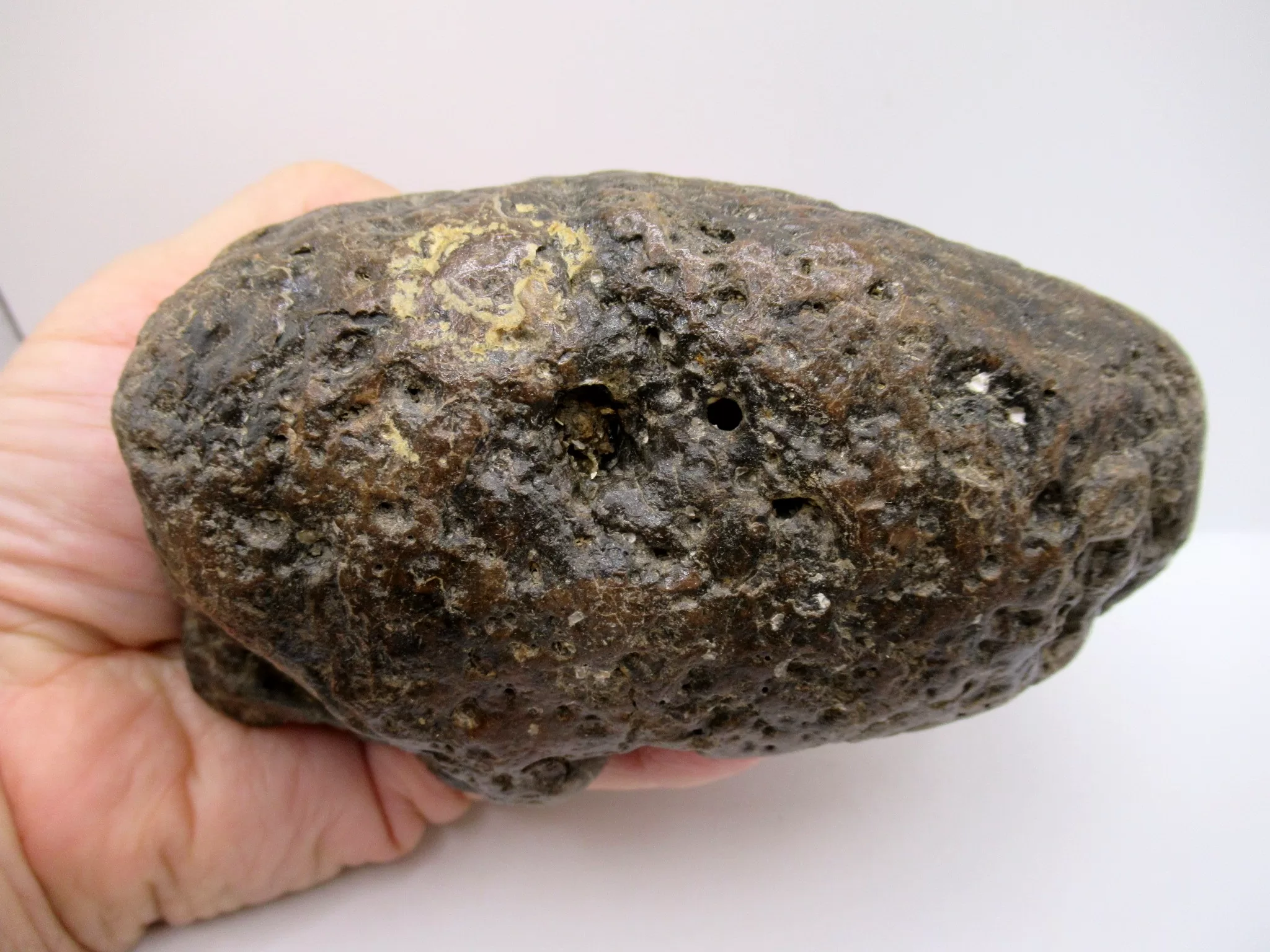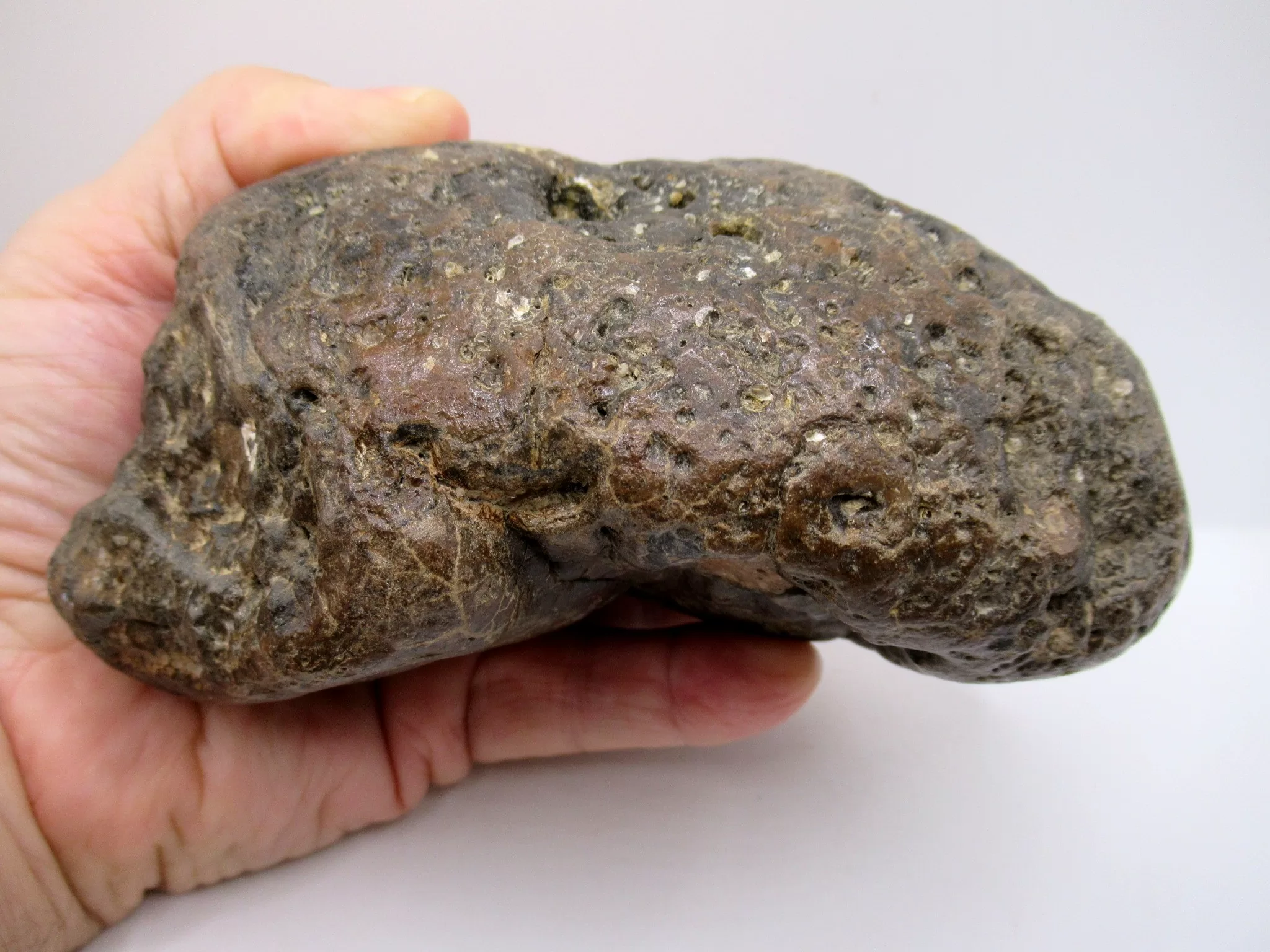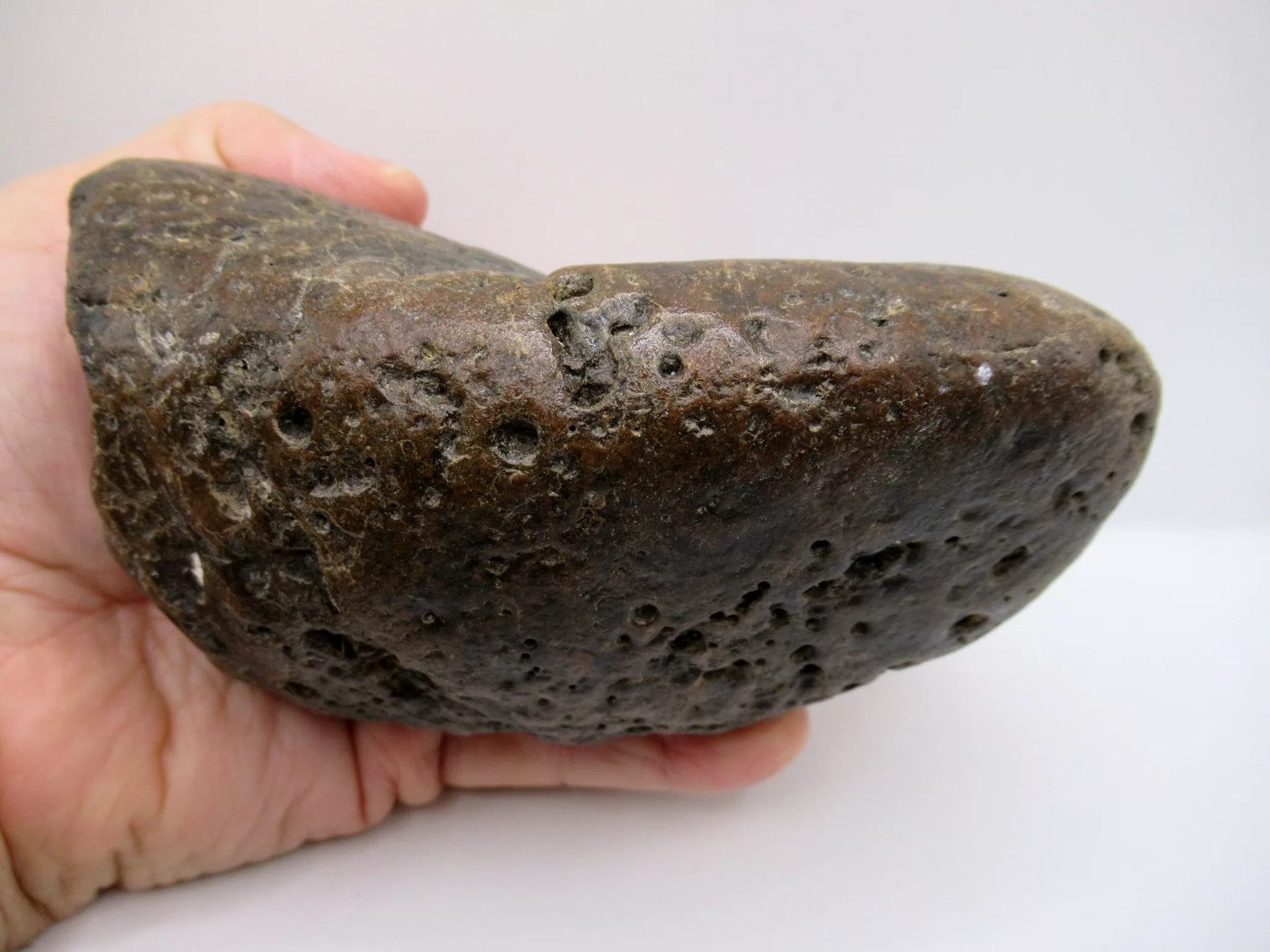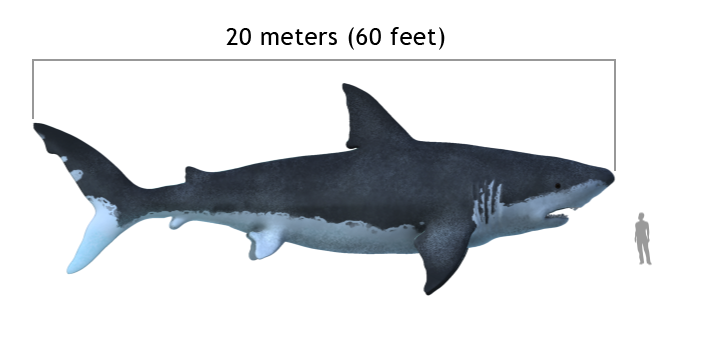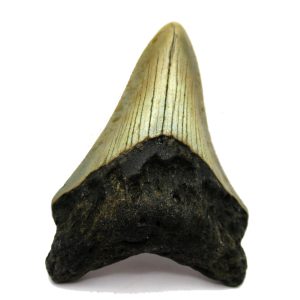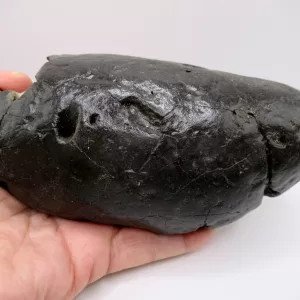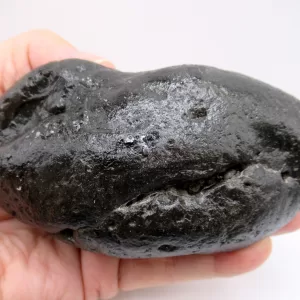Description
Megalodon Shark Coprolite
- Megalodon Shark Coprolite (Fossil Poop)
- Miocene Age
- Beaufort County, South Carolina
- This dark brown, solid specimen measures approx. 5.38″ long.
- MORE Fossil Coprolite for Sale
The coprolite remains of megalodon are typically spiral-shaped, indicating that the shark may have had a spiral valve, a corkscrew-shaped portion of the lower intestines, similar to extant lamniform sharks. Miocene coprolite remains were discovered with Megaldon Shark Teeth in Beaufort County, South Carolina by divers.
Carcharocles megalodonis considered to be the largest shark, as well as the largest fish, that ever lived. Fossils attributed to megalodon have been found dating from the early Miocene Epoch to the end of the Pliocene Epoch. The word megalodon, a compound of Greek root words, means “giant tooth.”
Megalodon is represented in the fossil record by teeth, vertebral centra, and coprolites. As with all sharks, the skeleton of megalodon was formed of cartilage rather than bone; consequently most fossil specimens are poorly preserved
A coprolite (also known as a coprolith) is fossilized feces. Coprolites are classified as trace fossils as opposed to body fossils, as they give evidence for the animal’s behavior (in this case, diet) rather than morphology.

